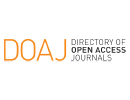Lima: City of Queers
The Meaning of Queer Sexual Practices in Lima, Peru from an Intersectional Perspective (1950-1980)
Abstract
How to understand the meanings of queer sexual practices in Lima, Peru, between the 1950s and 1970s, from an intersectional perspective? This thesis seeks to articulate a first historical narrative of the experiences of queers in Lima between the 1950s and 1970s. Drawing on six oral interviews, eight novels, two songs, a short film, a blog, and ten editions of a travel guide, these contribute to debates about the tensions between identity and sexual behaviors, the intersection of race and class in identity processes, and urban space. Queer existences between the 1950s and 1970s can be understood as gender-inverting behaviors that posited queers as the feminine and complementary partners of "men" or "machos." Any man could engage in homosexual relations, from almost any location, but the meaning they attributed (or did not) to these behaviors depended on their race, class, and gender identity. Those who behaved femininely could acquire a faggot identity, while their male partners could remain "men."
Copyright (c) 2022 Argumentos

This work is licensed under a Creative Commons Attribution 4.0 International License.








